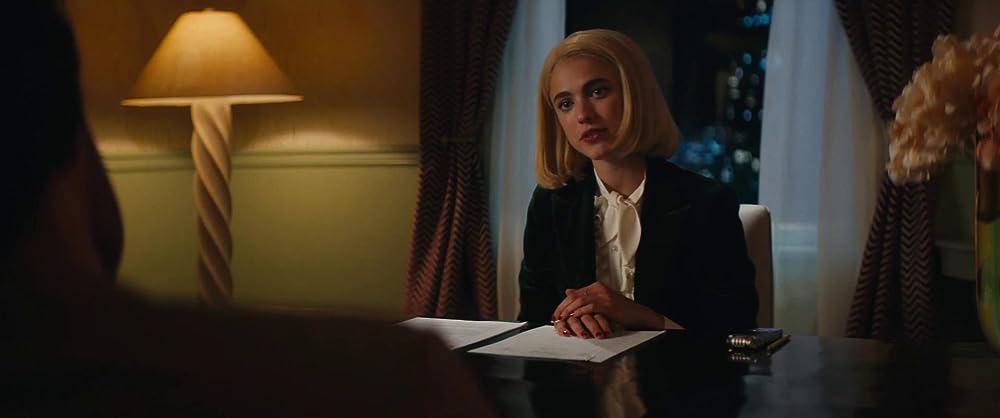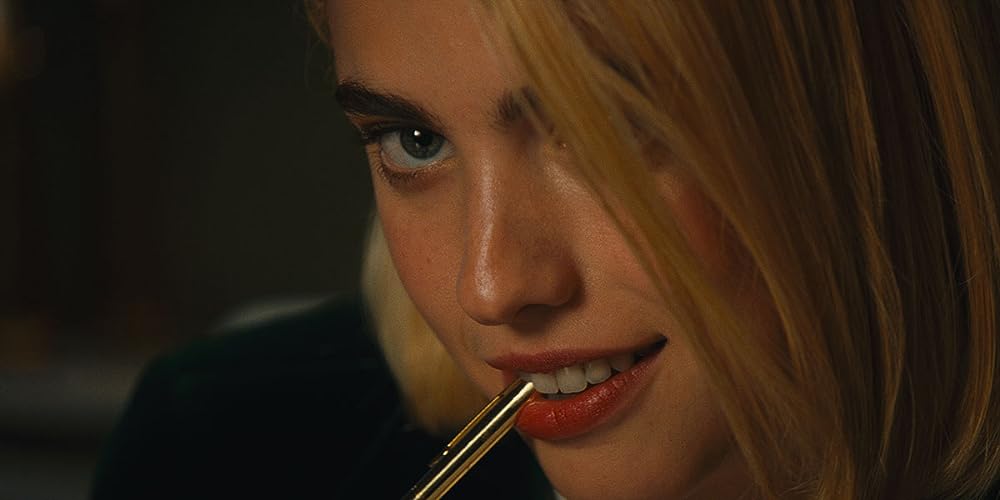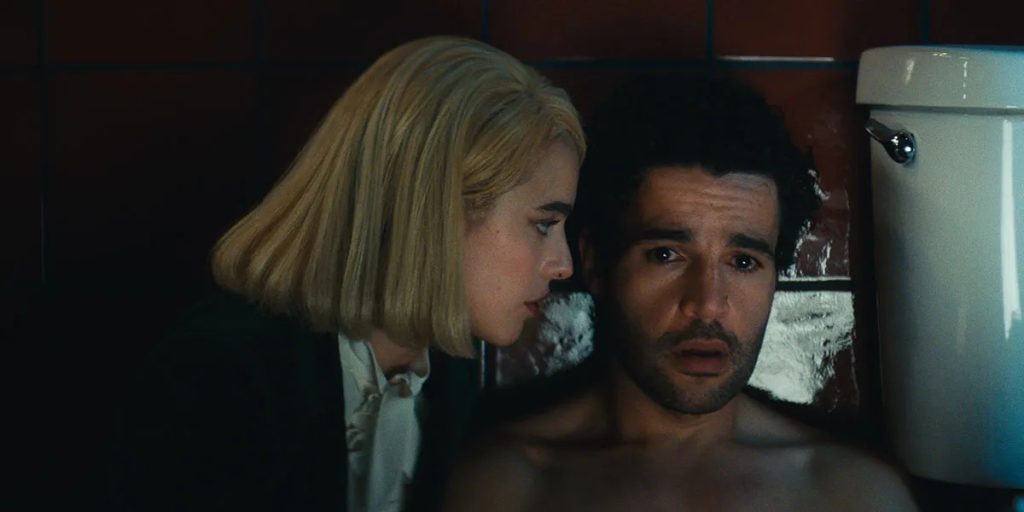How “Sanctuary” Cinematographer Ludovica Isidori Turned a Single Room Into a Dynamic Psycho-Emotional Arena
How do you make a single location subliminally consume an entire story? That was the question Italian cinematographer Ludovica Isidori had to answer in director Zachary Wigon’s sophomore film Sanctuary.
Starring Christopher Abbott (Girls) as Hal, an heir to a luxury hotel empire, and Margaret Qualley (Maid), a dominatrix named Rebecca who is equal parts seductive, smart, and clever, Sanctuary is a slow-burn psychological thriller that reveals the intimacy of their unorthodox relationship with delicious restraint. It’s a relationship that has major business benefits for Hal—Rebecca has transformed Hal into someone capable of taking over the family business. His renewed vigor, however, is unpromising for Rebecca as he wants to end their arrangement. What ensues is a series of power plays that flash between reality and fantasy: Hal wanting to start a new life and Rebecca reminding him of her worth. All of it is confined to a single space – a hotel room.
“The biggest conversation Zach and I had was how to make a movie that belongs to cinema,” Isidori tells The Credits. “We wanted the audience to know they were in for a ride and be aware they’re watching a movie. So we thought the camera could sometimes call attention to itself without taking away from the performances. It gave us the freedom to make this a much bigger journey.”
The visual grammar was planned with storyboards – the first half of which was made using phone apps. Camera moves matched the emotional tenor and power dynamics of scenes, sometimes zooming, moving 180 degrees, or breaking the fourth wall for effect. Isidori considered specific camera language for when the two characters cohabit the same frame or when they were opposite poles. For moments when their “egos are maxed out” or “stakes are heightened,” the camera whip pans as if it’s grabbing for attention.
Framing was also based on the story’s timeline and who was moving it along. In the opening sequence, which sees Rebecca pull out papers and ask Hal about his ability to take over as CEO, the camera reveals the space through a series of connecting dolly shots. “The reason we chose dolly instead of Steadicam or handheld was dictated by the idea that it’s a first date,” says Isidori. “Your body language changes throughout the night. You’re first figuring it out. You’re a little more rigid, a little more uptight and staged. And then you loosen up.”

As the two sit at a table and Rebecca begins to ask him questions, shots were rhythmically edited to the score from composer Ariel Marx building to a climactic reveal. “We choreographed and rehearsed that scene the most,” notes Isidori. “The shots were meticulously planned, and the zooms built this pressure cooker, ticking bomb effect. Some of the shots were instinctual based on the performance that unfolds in front of your eyes. Having Zach’s trust for those moments was phenomenal. It was a combination of planning and letting your instincts take over when something works well. It adds that little sparkle.”

One captivating scene that shows the power dynamics between the couple is when Rebecca tells Hal to clean the bathroom. Here, Rebecca sits in a chair wearing a green velour business suit and a white puffy shirt ordering him around. The camera looks up at her in a display of dominance. “Margaret sat down like a boss, and it made us want to put the camera down and look up at her on a wider lens and under light the scene. It’s not a beauty choice, but it works,” she says. “On the reverse angle [showing Hal], it gives a sense of voyeurism. We embraced the nature of the role game.”

In another scene where Hal loses control, the camera mimics his mindset with a spiraling frame. “It’s the idea that he’s losing his point of reference. He’s existing in a world of rule,s and now that the rules are gone, he doesn’t have an anchor point anymore,” explains Isidori.
For intimate moments, characters would gaze directly into the camera as a way to visualize emotions and control. “The questions we thought about is what creates intimacy and what is the closest proximity you can create through a lens,” says Isidori. “Our answer was them acting to the lens as if it was another person. At the same time, there is a play with the audience. Is Rebecca seducing him or us?”
Color and lighting highlighted the emotional space of each character. Practicals were supplemented with LEDs and tube lighting throughout the location, with decisions being made not simply based on the room alone but on how they played when the characters were next to each other. In scenes where practical lights were smashed by a character during a fit of rage allowed the cinematographer to change the mood organically. For instance, the hotel bedroom is lit with tungsten but changes halfway through to green. “It works because of where they are emotionally,” says Isidori. It’s a hint to the contaminating world of light outside affecting the narrative inside. Isidori also switched between anamorphic to spherical lenses for visual subtlety. The first and last acts use anamorphic for the theatrical feel, and the middle section uses spherical to let the characters take the lead.
“It’s a layered movie because there’s a play within them. A natural role play,” says Isidori. “Then there’s all these layers that keep shifting, and there is this play with the audience that happens as well. We tried to support all that so you, as an active viewer, are a participant.”
Sanctuary is available now to stream and/or rent on a number of platforms.
Featured image: Rebecca (Margaret Qualley ) and Hal (Christopher Abbott) in Sanctuary. Courtesy Neon.



